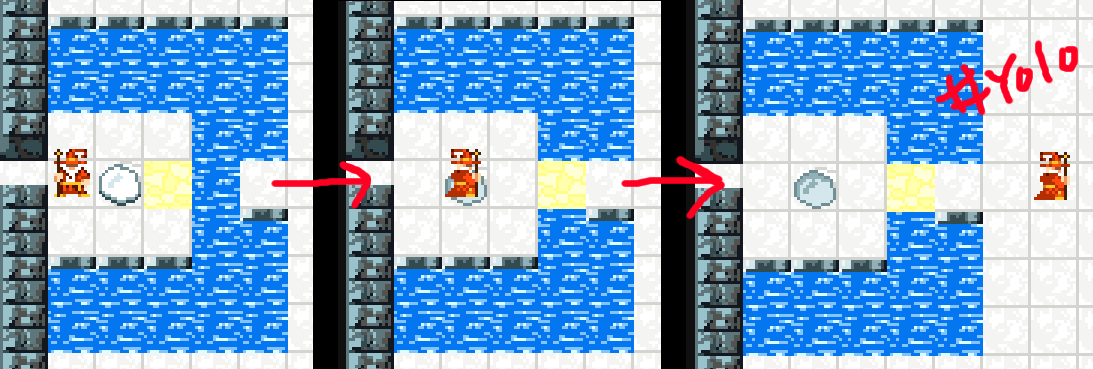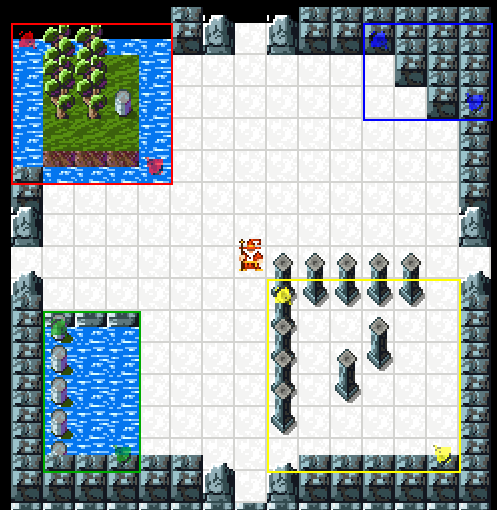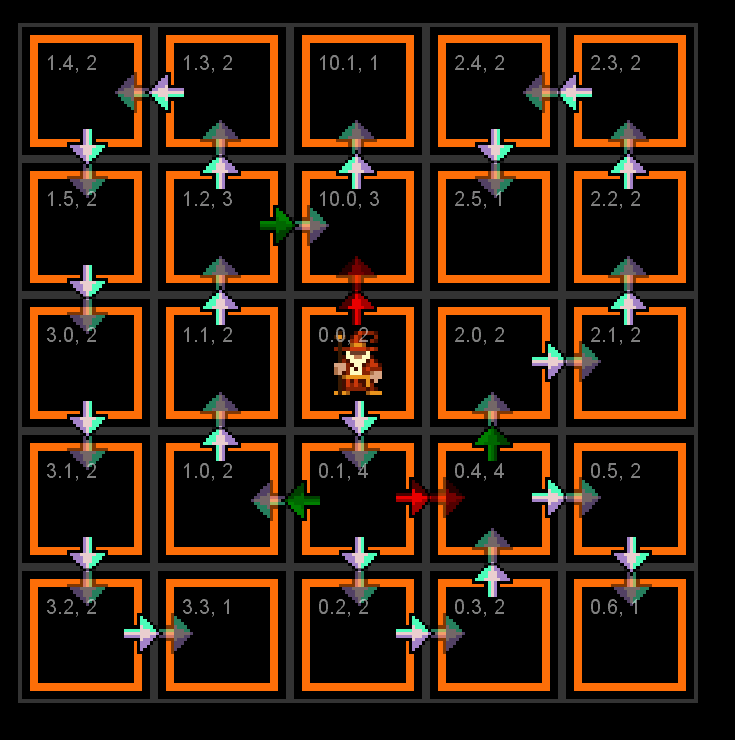I added a new type of pattern to the room generator today: the central feature. This is not anchored to a doorway or corner, but is centered in the room, and can be flipped and rotated to fit (or just for variety).
The pattern authoring and placement code is starting to get funky. It’s going to take some cleaning up, but I’m saving that for next week, since I want to just power through and get some monster spawners in there.
One thing that will need to be fixed first is the priority system for merging multiple overlapping patterns. You can see some of the issues that are created below:
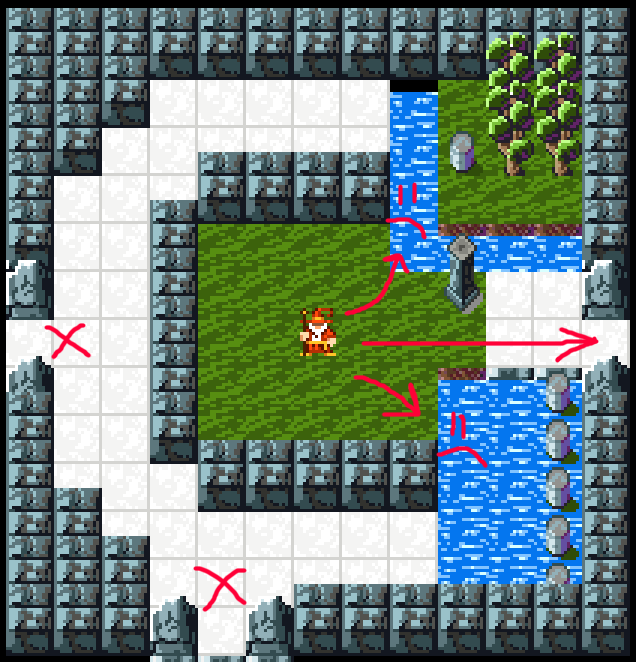
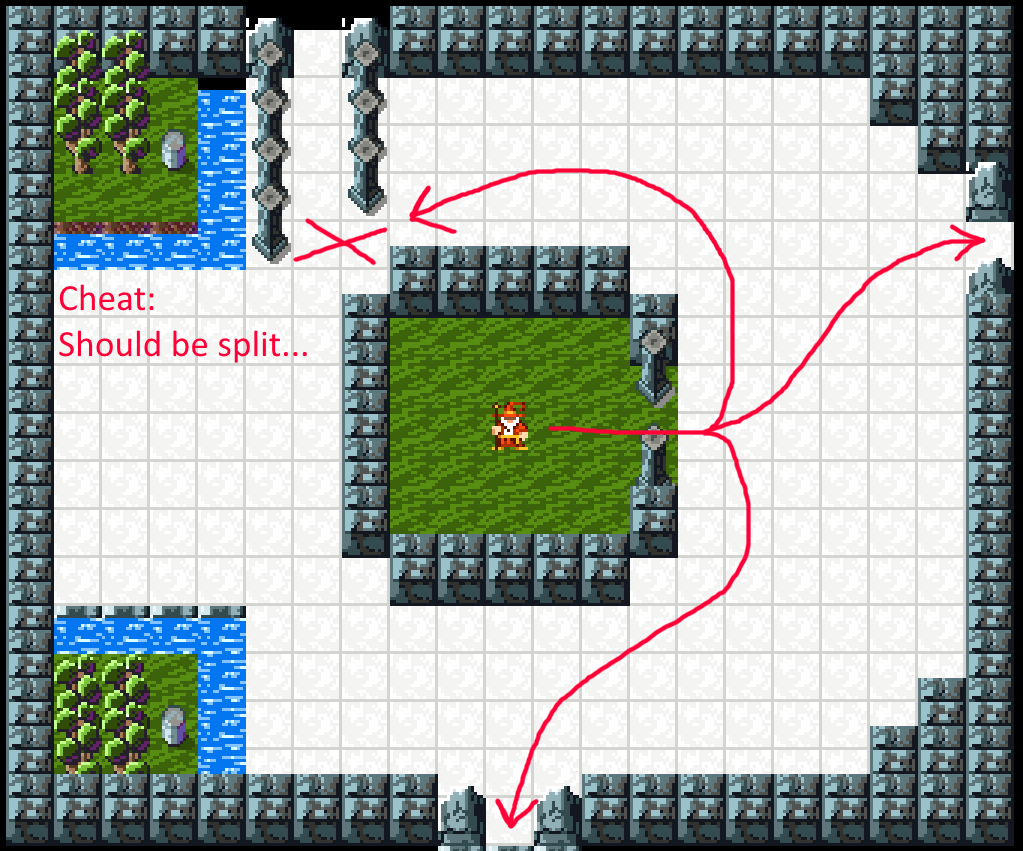
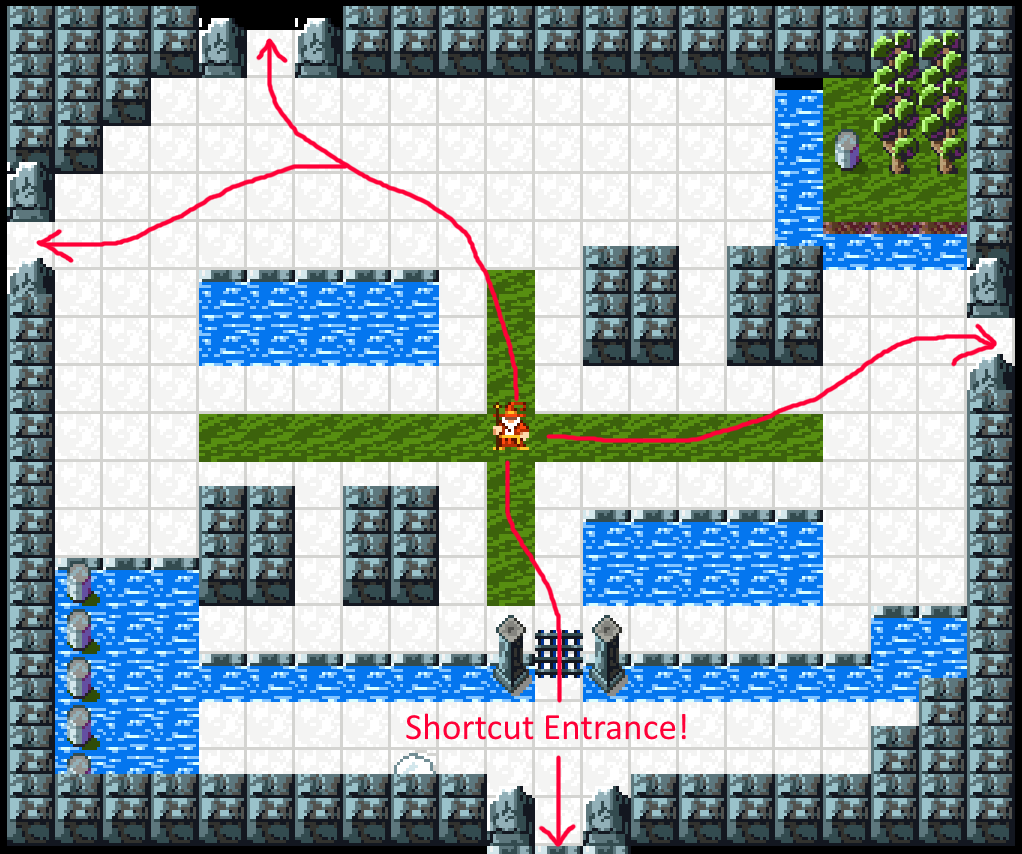
Dungeon generation is coming along really nicely. For the first time, I have a 5×5 grid of randomly generated rooms, and about 50% of the time, the entire map is navigable.
